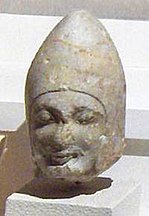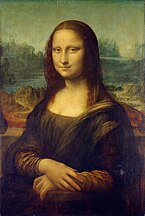
Back بورتريه Arabic بورتريه ARZ Portret Azerbaijani Партрэт Byelorussian Партрэт BE-X-OLD Портрет Bulgarian Poltred Breton Portret BS Retrat Catalan Portrét Czech
A portrait is a painting, photograph, sculpture, or other artistic representation of a person, in which the face is always predominant. In arts, a portrait can be represented as half body and even full body. If the subject in full body better represents personality and mood, this type of presentation may be chosen. The intent is to display the likeness, personality, and even the mood of the person. For this reason, in photography a portrait is generally not a snapshot, but a composed image of a person in a still position. A portrait often shows a person looking directly at the painter or photographer, to most successfully engage the subject with the viewer, but portrait can be represented as a profile (from aside) and 3/4.
- ^ a b Cahn, Herbert A.; Gerin, Dominique (1988). "Themistocles at Magnesia". The Numismatic Chronicle. 148: 20 & plate 3. JSTOR 42668124.
- ^ Tanner, Jeremy (2006). The Invention of Art History in Ancient Greece: Religion, Society and Artistic Rationalisation. Cambridge University Press. p. 97. ISBN 9780521846141.


